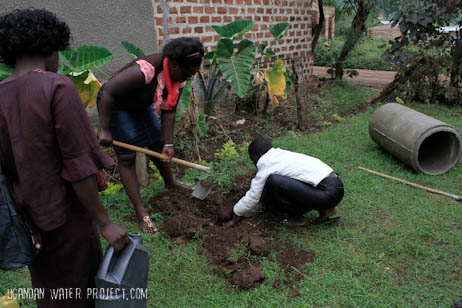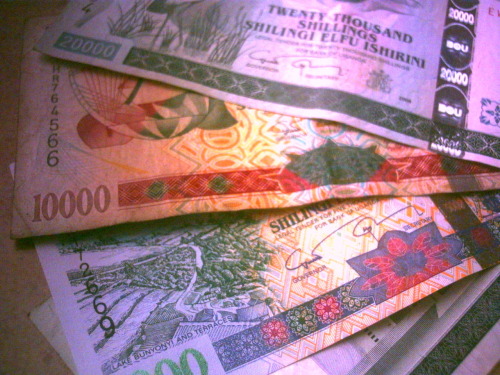 Reading through another “butt-kicker” (books that rough me up a bit and get me going in a better direction without being nice about it) – called “Toxic Charity” by Robert D. Lupton .
Reading through another “butt-kicker” (books that rough me up a bit and get me going in a better direction without being nice about it) – called “Toxic Charity” by Robert D. Lupton .
Page 118 is forcing me to wrestle with some of the questions I need to ask myself as we consider engaging in community economic development. This is relevant because the Ugandan Water Project has been dabbling in micro-ec projects from the beginning. Water is and always will be our bread and butter but working in a relational way like we do constantly brings us to the familiar doorstep of “What Next?”. As with many things in the arena of compassion in action, there are many ways of trying to help the communities and individuals we are focused on – some are amazingly efficient and inspiring in their sustainability and integration into local culture; some suck and leave a trail of bodies in their wake. I always fear that I am on the verge of the latter, which is what keeps me learning and reading and asking if you have any better ideas.
The questions that are taunting me on page 118 are specifically geared towards micro-lending – which UWP is currently easing into in the weeks ahead. Even as I write this, I have not read what I am going to write about so I have a very real apprehension thinking about what the next few minutes may mean – could be encouraging and affirming to the steps that we have been taking to lay ground work…or I may end up pulling the few files and legal pads out of my desk and heading out back to give them a good coat of FIRE.
Into the pool…

– he said that the statue was always in that block of marble and that he only needed to remove the excess waste and reveal what was always there. So often the solution to a communities problems are almost entirely present in that community but hidden. Listening, watching, learning – collecting enough story to synthesize the next chapter in a way that is true to the existing characters, setting and plot. Lipton also challenges us to look at assets at a household or communal level – appropriate because Ugandan culture is so collective. As an American, I too often look only at what tools are in my own garage – I forget that there are others in my life ready to lend and come along side me. Our high-value of personal liberty is a strength but carries certain blind-spots.”What are the assets of this place?” – Seems simple but as I think about our partner communities I am in conflict. Kawanda is not far from Kampala, the capital and boasts the Kawanda Agricultural Research Station.
 As a result, it is an ideal community to pilot any projects related to agriculture because the community has a large part of the population that works in that field so the collective intelligence of the village swings toward agriculture. Kivulu, by contrast, is a slum. Our friends that do outreach to street kids in Kivulu are up against tremendous odds because of the location in which they are working. They have a borrowed shelter in the slum and almost no recognizable resources. Are there assets in a place built on years of trash with streets lined with shacks cobbled together with bits of wood, carboard and tin? On closer consideration they do – they have some of the most valuable resources. They have time – many are unemployed and while we often see men women and children standing idle – that represents and untapped resource. Endurance – the ability to survive in Kivulu has developed a strength in those people to persevere and last in adverse conditions – an opportunity that we would run from because of its difficulty would likely appeal to our friends in this place – they are strong. Resourcefulness – in a place where there is almost nothing, nothing goes to waste – there are not leftovers, there are no garage sales.”What’s happening in the local, national, and international markets?” This is important not only for the fact that our local partners need to plug into the greater economy, but it also assumes a core value: These people have a significant part to play because they have intrinsic value to bring to the table. I do think this is one of the areas that I as a professional consumer can bring some expertise. Because we have disposable income and a greater cashflow in our lives we are engaging in the marketplace in a very regular way. Today I will at some point go out and carry on some level of commerce – at the post office, the grocery store the gas station, the bank – and all of these activities keep me plugged into the greater economy around us. So many of my friends in Uganda still live an economically isolated life – rarely engaging in economic activity beyond the purchase of simple goods purchased from the local general store. While we have much to learn about the Ugandan culture and economy, we are years ahead in consumer habits and much more engaged on a wider scale economically so we bring a valuable perspective to the table.
As a result, it is an ideal community to pilot any projects related to agriculture because the community has a large part of the population that works in that field so the collective intelligence of the village swings toward agriculture. Kivulu, by contrast, is a slum. Our friends that do outreach to street kids in Kivulu are up against tremendous odds because of the location in which they are working. They have a borrowed shelter in the slum and almost no recognizable resources. Are there assets in a place built on years of trash with streets lined with shacks cobbled together with bits of wood, carboard and tin? On closer consideration they do – they have some of the most valuable resources. They have time – many are unemployed and while we often see men women and children standing idle – that represents and untapped resource. Endurance – the ability to survive in Kivulu has developed a strength in those people to persevere and last in adverse conditions – an opportunity that we would run from because of its difficulty would likely appeal to our friends in this place – they are strong. Resourcefulness – in a place where there is almost nothing, nothing goes to waste – there are not leftovers, there are no garage sales.”What’s happening in the local, national, and international markets?” This is important not only for the fact that our local partners need to plug into the greater economy, but it also assumes a core value: These people have a significant part to play because they have intrinsic value to bring to the table. I do think this is one of the areas that I as a professional consumer can bring some expertise. Because we have disposable income and a greater cashflow in our lives we are engaging in the marketplace in a very regular way. Today I will at some point go out and carry on some level of commerce – at the post office, the grocery store the gas station, the bank – and all of these activities keep me plugged into the greater economy around us. So many of my friends in Uganda still live an economically isolated life – rarely engaging in economic activity beyond the purchase of simple goods purchased from the local general store. While we have much to learn about the Ugandan culture and economy, we are years ahead in consumer habits and much more engaged on a wider scale economically so we bring a valuable perspective to the table. “How are entrepreneurs supported?” – This is exciting to me in particular, because this is dealing with how does a community encourage and develop a culture of entrepreneurship. Micro-Economics typically is dealing with small cottage industry type ventures with 1-5 workers and few tools or assets. In order to “farm” entrepreneurs (which is a personal passion of mine) I have found it necessary to go even smaller than micro… to sub-atomic-theoretical-partical economics…..wait, wait – that’s too small – it’s more like Nano-Economics(tm). These are ragged edge petri dish ventures that may look like one tool for an person or even for a group to share. For instance – we bought a weed eater for a church that has a number of young
“How are entrepreneurs supported?” – This is exciting to me in particular, because this is dealing with how does a community encourage and develop a culture of entrepreneurship. Micro-Economics typically is dealing with small cottage industry type ventures with 1-5 workers and few tools or assets. In order to “farm” entrepreneurs (which is a personal passion of mine) I have found it necessary to go even smaller than micro… to sub-atomic-theoretical-partical economics…..wait, wait – that’s too small – it’s more like Nano-Economics(tm). These are ragged edge petri dish ventures that may look like one tool for an person or even for a group to share. For instance – we bought a weed eater for a church that has a number of young
adults living on their own. The machine is available to borrow by anyone in the church but they must return it in good condition and with a full fuel tank and a contribution towards replacement string and maintenance. We look to see who is taking advantage of this machine – is there a couple of young people that use it more than others? Who is best at finding places to themselves out with the weed eater. Perhaps there are a few who use the machine but one in particular that takes excellent care of it. The experiment allows for us to encourage and identify those who are ready to get into a more structured opportunity. Nano-Economic opportunities open a door and wait to see who will walk in and take advantage. They are some times hard to define because they isolate one or two core values of entrepreneurship to see if they will grow and reproduce. What about more obscure nan-economic experiments – a friend of mine in Uganda who is looking to measure trustworthiness will a few individuals too hold onto some money for a period of time. When he asks for the funds back he obviously would be disappointed if they didn’t have the funds to return but most often they have the funds. What he really looks for is who among his test group has kept the exact pieces of currency that were given to them – our lender had noted the serial numbers of the bills before dispersing them and those who return the exact same bills have shown evidence that they held the trust as a high priority. I have more thoughts on this but this is getting too long already.
These questions are pesky – persistent challengers to the ideas we may create on our own but there is a tremendous value to the sharpening we receive by embracing them.
jh
